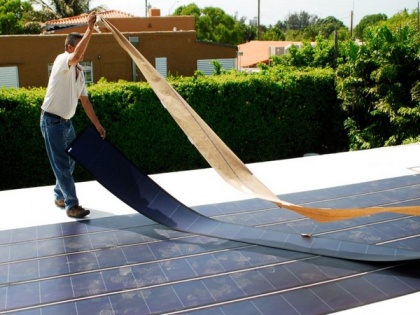New approach developed to create thin films for electronics, acoustics
By ANI | Published: March 25, 2021 06:46 PM2021-03-25T18:46:45+5:302021-03-25T19:52:28+5:30
During a recent study, a Purdue University innovator developed a new approach to creating popular thin films that are used for devices across a broad range of fields, including optics, acoustics, and electronics.

New approach developed to create thin films for electronics, acoustics
During a recent study, a Purdue University innovator developed a new approach to creating popular thin films that are used for devices across a broad range of fields, including optics, acoustics, and electronics.
Epitaxial lithium niobate (LNO) thin films are an attractive material for electronics and other devices. These films offer flexibility and other properties that are important to manufacturers.
The challenge is that these devices demand high-quality thin films that can be difficult to grow and produce. Haiyan Wang, a Purdue materials engineer, developed a new approach to creating these films. The work is published in Advanced Photonics Research.
"We created an approach that makes these films easier to produce," said Wang, the Basil S. Turner Professor of Engineering in Purdue's College of Engineering. "We developed a versatile nanocomposite-seeded approach that allows us to create single-layer films. Typically, engineers have used a double-layer approach, which adds to the complicated production process."
This work is supported by Sandia National Laboratories through its Academic Alliance initiative. This technology work also is supported through Sandia's Diversity Initiative.
"Our approach offers an efficient new option for optics, acoustics, and electronics," said Robynne Paldi, a Ph.D. candidate at Purdue who helped lead the research. "Our films are grown through a pulsed laser deposition method and growth conditions are optimized to achieve high-quality films that can be easily integrated into devices."
The innovators worked with the Purdue Research Foundation Office of Technology Commercialization to patent their technology.
( With inputs from ANI )
Disclaimer: This post has been auto-published from an agency feed without any modifications to the text and has not been reviewed by an editor
Open in app